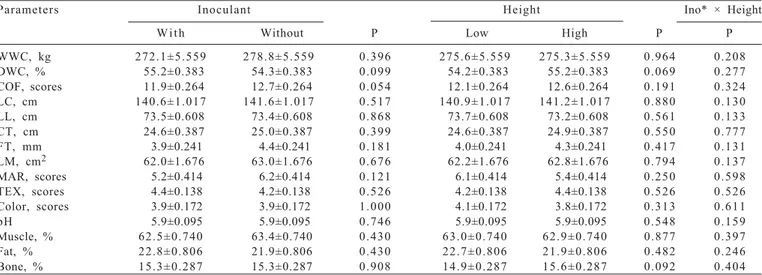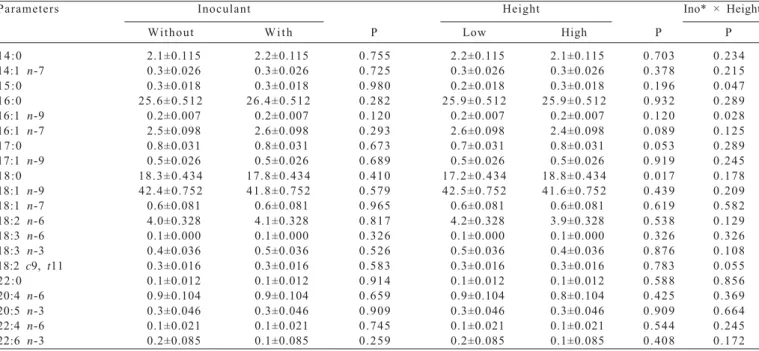Corn silage with and without enzyme-bacteria inoculants on performance, carcass characteristics and meat quality in feedlot finished crossbred bulls
Texto
Imagem




Documentos relacionados
The objective of this experiment was to evaluate the physical carcass composition and meat quality characteristics of Holstein calves in feedlot or pasture
The inclusion up to 15% of glycerin in the diet of kid goats Boer crossbred, although did not affect feed conversion and performance, compromised the intake and carcass weight..
The level of 0.5% clinoptilolite, in growing and finishing pigs diets did not affect feed intake, daily weight gain, feed conversion, carcass quality, hot carcass weight,
The effects of gender and slaughter weight on the growth performance, carcass traits, and meat quality characteristics of heavy pigs.. The effects of sex and salughter
In conclusion, heavy heifers finished in pasture and that were concentrate-supplemented had better animal performance; however, the carcass characteristics and meat quality
The addition of propolis-based product (PBP) in the diet of crossbred young bulls did not affect productive performance, carcass characteristics, total digestibility of DM
The performance variables (weight, weight gain, daily weight gain, feed conversion and feed intake) during the 7 - 42 days period, the fasting weight and the warm carcass weight
We evaluated the performance (feed intake, weight gain and feed conversion ratio), carcass yield and cuts, histomorphometry of the small intestine (height, circumference and width